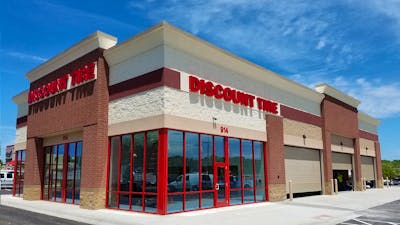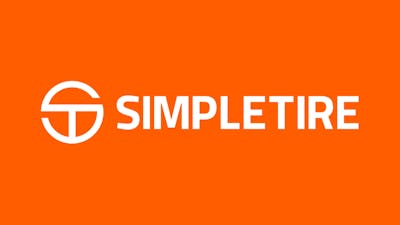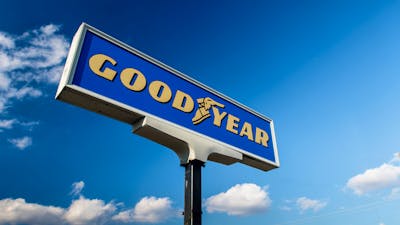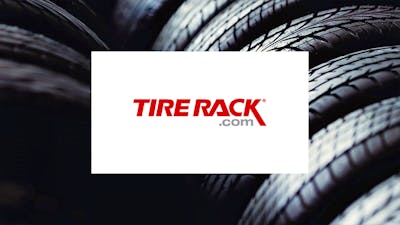Best Tires for the Chevrolet Equinox
The Chevrolet Equinox has grown out of its rental-fleet-only beginnings into one of the most popular crossovers in the auto industry today. The popular Chevy Equinox comes in four different trim levels, has available all-wheel drive, and comes with one of three wheel sizes. Because there is such a high level of choice, finding the right tire size can be tricky. We will break down the different options below.
Get the Best Deals on Tires
Have an older Chevy Equinox? See tire sizes for previous years.
Best 17-inch Tires for the Chevy Equinox (L, LS, LT)
- Sumitomo Touring LSH - Best budget tire
- BFGoodrich Advantage T/A Sport LT - Best mid-priced tire
- Goodyear Assurance Comfortred Touring - Best superior tire
Best 18-inch Tires for the Chevy Equinox (Premier)
- Uniroyal Paw Touring - Best budget tire
- Pirelli Cinturato P7 All Season Plus - Best mid-priced tire
- Michelin Premier LTX - Best superior tire
Best 19-inch Tires for the Chevy Equinox (Options Package)
- Pirelli Scorpion Verde All Season Plus - Best budget tire
- Continental Crosscontact UHP - Best mid-priced tire
- Goodyear Assurance Weatherready - Best superior tire
Shop Tires Online and Save
Online tire prices are usually less than in store

What Tires Are on My Equinox?
The 2020 Equinox comes in four different trims: L, LS, LT, and Premier. The vehicle can be equipped with one of three different wheel and tire sizes, depending on the trim and options packages:
- The Equinox L, LS, and LT come with 17-inch wheels and P225/65 R17 tires. These vehicles were equipped with Bridgestone Ecopia H/L 422 Plus tires from the factory.
- The Equinox Premier comes with 18-inch wheels and P225/60 R18 tires. These vehicles were equipped with either Michelin Premier LTX or Michelin Primacy Tour A/S tires from the factory.
- With an available options package, certain trims can be equipped with 19-inch wheels and P235/50 R19 tires. These vehicles were equipped with Hankook Ventus S1 Noble2 tires from the factory.
Top Tire Replacement Brands for Your Chevrolet Equinox
For each stock wheel size, we’ll provide a recommendation for a Budget, Moderately Priced and a Cost-No-Object replacement tire
Equinox L, LS, and LT
These crossovers have a mainstream 17-inch wheel size that makes it easy to shop for tires.
- Budget - Sumitomo Touring LSH. The Sumitomo Touring LS H has solid customer ratings, a great H speed rating, and dependable tread life ratings. At just $93 each, they’re a real value.
- Moderately Priced - BFGoodrich Advantage T/A Sport LT. Tire prices for 17-inch wheels climb quickly, but thankfully there’s a lot of value still left in the mid-range. Priced at $140 each, the BFGoodrich Advantage is one of the most highly rated tires on the market and has good tread life and all-season traction.
- Cost-No-Object - Goodyear Assurance Comfortred Touring. The Goodyear Assurance Comfortred Touring, at $160, isn’t the most expensive option for Equinox models with 17-inch wheels, but it’s one of the best and long-lasting.
Chevrolet Equinox Premier
The Equinox Premier’s 18-inch wheel size is middle of the road in today’s world of oversized wheels. That said, you’ll have to be careful that you’re buying the right type of tire for your driving style and weather conditions that you see regularly.
- Budget - Uniroyal Tiger Paw Touring. The Uniroyal Tiger Paw Touring doesn’t have many reviews, but it’s got the specs to deliver a solid value at under $100 per tire.
- Moderately Priced - Pirelli Cinturato P7 All Season Plus. The Pirelli Cinturato P7 tire is one of the highest-rated tires you can get for your Equinox Premier. They are frequently discounted well below their suggested MSRP and offer great all-season traction with good tread life ratings.
- Cost-No-Object - Michelin Premier LTX. You can spend more on tires for your Equinox Premier, but you won’t get a tire that has more to offer than the Premier LTX from Michelin. It is a performance-leaning tire, but still has solid all-weather traction and good tread life.
Equinox with options package and upgraded wheels
Large wheels like the 19-inches that come on some Equinox models sometimes make it hard to find a proper all-season tire at a reasonable price. Thankfully, there are plenty of good options to fit your Equinox’s upgraded wheel size.
- Budget - Pirelli Scorpion Verde All Season Plus. The Scorpion Verde All Season Plus isn’t exactly “cheap”, at $146, but they offer highly rated all-season traction, a solid tread life rating, and good value.
- Moderately Priced - Continental Crosscontact UHP. The Crosscontact UHP is a performance tire, so it’s better suited for people that live in warmer climates. That said, it’s got a good tread life rating, great consumer ratings, and a great wet weather traction rating.
- Cost-No-Object - Goodyear Assurance Weatherready. The Assurance Weatherready Tire will cost you quite a bit, at $221 per tire, but the price is well worth it. The Goodyear sports exception customer ratings, long tread life, and good year-round traction.
When Should You Replace Your Equinox Tires?
Two major factors should be a consideration when deciding to replace tires on any vehicle, not just the Equinox.
Most drivers travel somewhere between 12,000 and 15,000 miles per year, so the tires are much more likely to pass their useful life in mileage before any time-based expiration date rolls around.
The life of your tire can be somewhat predicted by its UTQG (Uniform Tire Quality Grade) rating. Tire manufacturers apply their own grades to tires for treadwear, traction, and temperature. When you’re researching tires online, a UTQG will come up next to the tire name in three digits and a number (ex. 500 A A).
You can glean a bit of info from the tires by reading this rating:
- 500 - The durability rating of a tire, compared to a control tire with a tread life of 100. To obtain a grade, tires run on a 640 kilometer course for 11,520 km. Every 1,280 km, the tread depth is measured, to provide a projected tread life. The higher the number, the longer the predicted tread life.
- A - This is the Traction rating of a tire, which indicates how well a tire stops in wet conditions. The highest letter grade is AA, followed by A, B, and C.
- A - The second letter in the UTQG is the Temperature rating, which indicates how well a tire holds up to extreme heat. A is the highest, followed by B and C.
The other consideration is time. Each tire has a raised date code on the sidewall. The number begins with the letters “DOT” followed by 12 digits in three four-digit groups. The date code is the third group of four digits. To decipher the date of your tires, the first two digits represent the WEEK the tire was produced, and the second two digits represent the YEAR.
For example, if your tire’s date code is 3217, that indicates the tire was manufactured in the 37th week of 2017, or sometime between September 11 and 17th that year.
Once tires go beyond five years old, it’s time to consider replacing them. Tires are made up not just of rubber and steel or kevlar belts, but chemicals that help the tires resist UV rays, temperature changes and a lot of other environmental hazards. Those chemicals start to break down after five years or so, and the tires aren’t doing the job that they need to do.
Why Not Replace with Original Equinox Equipment Tires?
You may choose to replace the tires on your Equinox with the same tires that came from the factory. There’s nothing wrong with that, but you may choose to change the tire or wheel size and type depending on the kinds of driving you’ll be doing.
You only need to purchase ONE set of tires for your car every four years or so, depending on how much you drive. When an auto manufacturer purchases tires, they buy them by the hundreds of thousands. For the manufacturer, the decision to choose a supplier one brand or another comes down to a price point.
For you, your consideration may be completely different. If you could get a tire that stopped 20 feet shorter for an additional $10 per tire over the original equipment, you’d probably do it. Similarly, if there was a tire that provided less road noise or longer tread life for a minimal investment overstock, chances are, you’d probably decide on the slightly more expensive tire.
See our recommendations for the Best Insurance for your Chevy Equinox
Changing Chevrolet Equinox Tire Sizes
The wheels on your Equinox can be swapped for a different size. This may be done for a variety of reasons, which can range from the need for a different type of tire or desire for a smoother or sportier ride. When you decide to downsize your wheels, you must compensate for the smaller size with a larger tire size that has a taller sidewall. This is done to maintain a consistent overall diameter of the wheel and tire.
Downsizing wheels has its advantages. Benefits include:
- Better ride quality – A fatter sidewall means more cushion for poor road conditions.
- Cost reduction – Large wheel sizes mean that tires are more expensive, so moving to a smaller wheel size will mean less costly tire purchases.
- Seasonal changes – Winter and snow tires are available for a larger selection of smaller wheel sizes, and the narrower footprint will provide better traction.
- Off-road – Many people choose to downsize wheels for off-road use to increase the vehicle’s shock absorption capabilities and bump traction on loose surfaces.
On the other side of the coin, going up in wheel size has its benefits:
- Better handling – Slimmer profile tires make for less rubber to move around.
- Better looks – This one’s subjective, but many people feel that larger wheels look better than smaller wheels with more rubber.
- Better braking – Larger, wider wheels provide a bigger patch of rubber on the ground to slow the vehicle, reducing braking distance.
How to Read Equinox Tire Sizes
When reading tire sizes, it’s important to understand what the numbers mean. The Chevrolet Equinox Premier’s P225/60 R18 all-season tires:
- 225 - indicates the width of the tire from one sidewall to the other in millimeters. This tire is 225 millimeters wide.
- 60 - indicates the aspect ratio, or sidewall height, as a percentage of the tire’s width. In this case, it’s 60 percent or 135 millimeters tall.
- R - means radial tires. Radials are the most common type of automotive tire and have fabric woven in at various angles with a tread that is strengthened with additional layers of rubber.
- 18 - indicates the wheel diameter.
Now that you know what comes on the new Equinox and how to read the size numbers, let’s look at the different types of tires available to you. Depending on the type of driving you’re doing, where you live, and the weather, you have a variety of choices for tire types:
- Touring and All-season - tires provide a smooth ride, good wet and dry traction, decent winter traction, and longer tread life. These tires are acceptable for winter use but can’t be expected to provide the traction and stopping power that a dedicated winter tire can.
- Performance tires - are focused on providing confident handling, better wet and dry traction, and a sporty feel. Their higher grip and speed ratings come with a tradeoff of shortened tread life and reduced ride quality.
- All-terrain tires - are built to maximize off-road traction and provide good durability overall. Their construction means more noise and less comfort on the road, but winter traction and tread wear are acceptable.
- Winter and snow tires - are made with special rubber compounds that maintain grip and pliability when temperatures drop. They are also built with special tread patterns to maximize the vehicle’s ability to start and stop on very slippery roads.
Tires Sizes By Year
| Year | Trim | Size |
|---|
Shop Tires Online and Save
Online tire prices are usually less than in store














